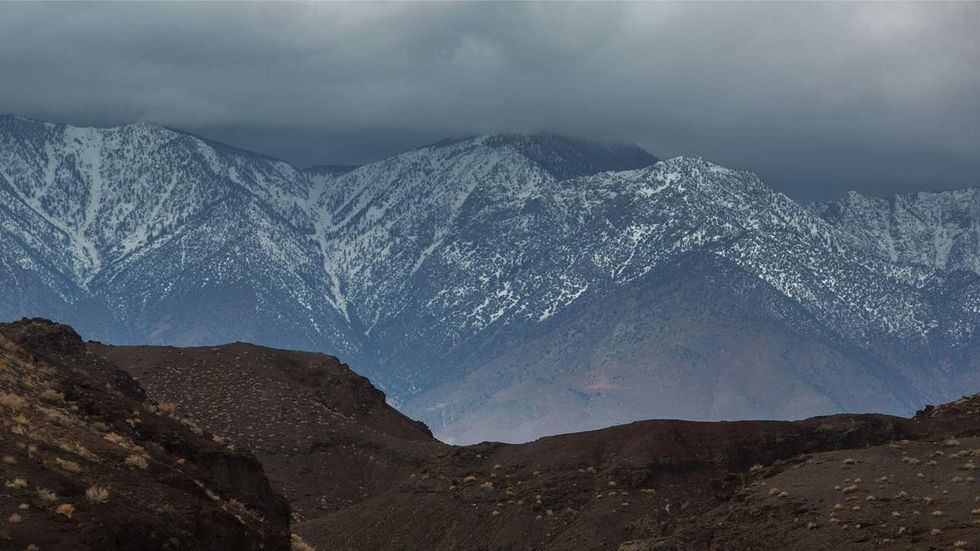
Sierra Nevada Mountains in California. (DAVID MCNEW/AFP/Getty Images)

Despite grim warnings issued by climate change alarmists over the past few years, California’s drought appears to be ending in spectacular fashion, with the state having experienced relatively high amounts of precipitation during the most recent winter.
According to the U.S. Energy Information Administration, a federal government agency, “For the first time since 2011, California’s drought is significantly weakening—a result of one of the wettest winters on record. California has experienced record levels of precipitation this winter, and unlike last winter, cooler temperatures over the 2016–2017 winter season have enabled the precipitation to build up snowpack (the total accumulated snow and ice on the ground).”
The EIA reported some of the biggest changes have occurred in the Sierra Nevada Mountains.
“Snowpack levels have increased significantly from the near-zero levels measured in the Sierra Nevada Mountains in April 2015,” said EIA’s report. “As of March 21, 2017, the California Department of Water Resources reported that statewide snowpack was 158% of normal for that date. A more important metric when considering snowpack is the snow water equivalent (SWE)—the total amount of water contained within the snowpack. California’s SWE levels have noticeably increased this year, and as of March 21, the California Department of Water Resources reported that the statewide snow water equivalent was also 158% of average for that date.”
In 2015, climate change researchers at the University of Arizona claimed their findings revealed the “extreme character” of the Sierra Nevada snowpack and the changing nature of California winters.
“Our study really points to the extreme character of the 2014-15 winter,” said Valerie Trouet, a professor at the University of Arizona's Laboratory of Tree-Ring Research. “This is not just unprecedented over 80 years—it’s unprecedented over 500 years."
“We should be prepared for this type of snow drought to occur much more frequently because of rising temperatures,” Trouet said. “Anthropogenic warming is making the drought more severe.”
[graphiq id="bpYZa72c1OB" title="California Precipitation, Past 12 Months" width="600" height="565" url="https://w.graphiq.com/w/bpYZa72c1OB"]
Earlier in March, researchers at UCLA released a study predicting the end of snow in California by the year 2100, a problem it says will be caused by “human-induced climate change.”
According to a press release issued by the university: “The Sierra Nevada snowpack, which provides 60 percent of the state’s water via a vast network of dams and reservoirs, has already been diminished by human-induced climate change and if emissions levels aren’t reduced, the snowpack could largely disappear during droughts, according to findings in the study published today in the journal Geophysical Research Letters.”
(H/T: Watts Up With That?)
Justin Haskins